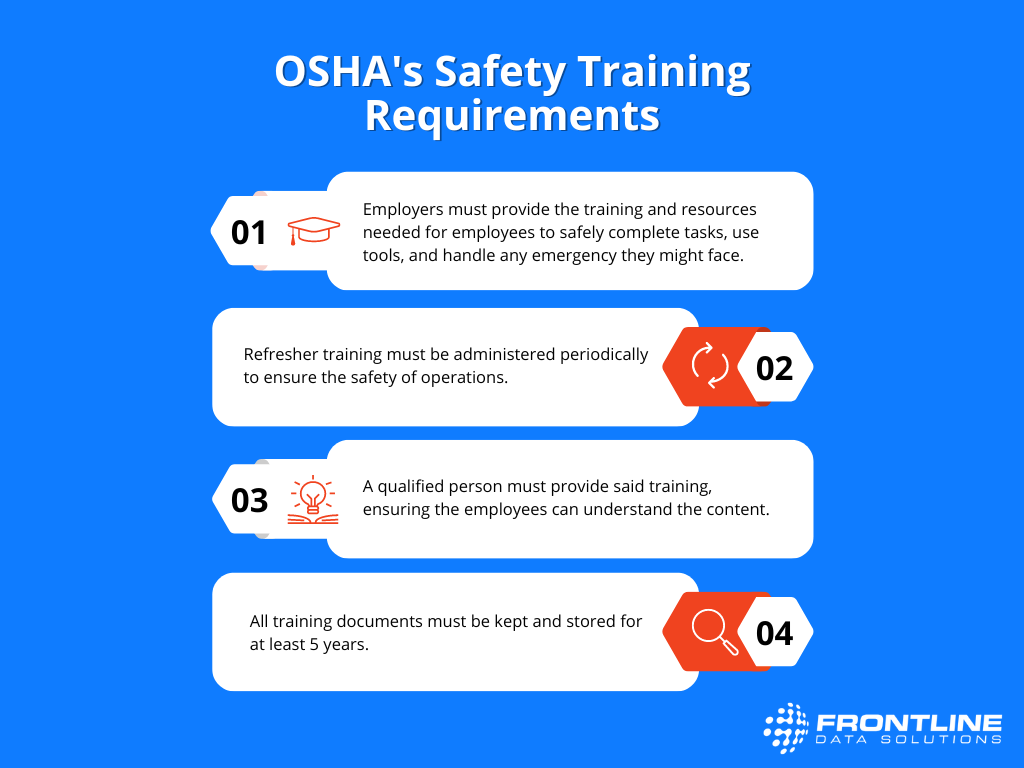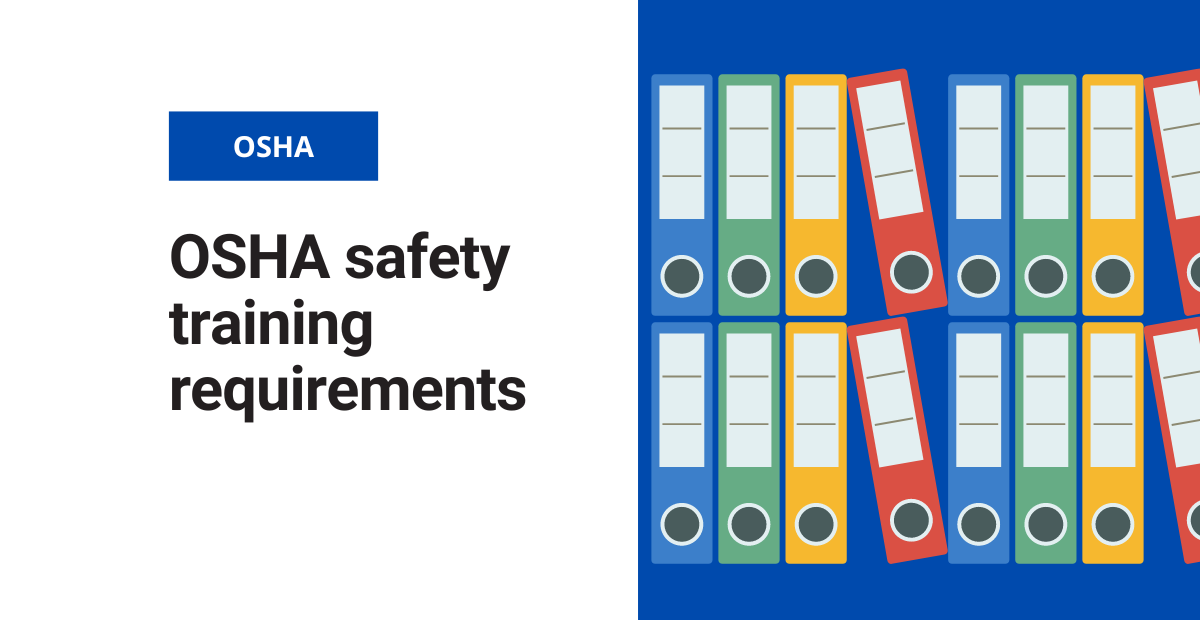OSHA requires all employers to train workers on safety and health issues that arise in the work environment. These regulations cover all employees, including full-time ones, part-timers, and contractors. In addition, OSHA’s safety training standards fall under five main categories: General Industry, Maritime, Construction, Agriculture, and Federal Employee Programs.
In this blog post, we cover the OSHA safety training requirements for General Industry, Maritime, and Construction
OSHA safety training requirements
Suppose your company is doing business or has employees within the previously listed industries and the geographic boundaries of the United States and its territories. In that case, you are covered under OSHA’s safety training standards. Basically, here are OSHA’s training requirements, in a nutshell:
- Employers must provide the training and resources needed for employees to safely complete tasks, use tools, and handle any emergency they might face.
- Refresher training must be administered periodically to ensure the safety of operations.
- A qualified person must provide said training, ensuring the employees can understand the content.
- All training documents must be kept and stored for at least 5 years.

General Industry training requirements
If you fall under OSHA’s general industry standards, and your business deals with or uses any of the items below, you are required to provide the necessary training.
- Exit routes and emergency planning
- Powered platforms, manlifts, and vehicle-mounted work platforms
- Occupational health and environmental control
- Hazardous materials
- Personal protective equipment
- General environmental controls
- Medical services and first aid
- Fire protection
- Materials handling and storage
- Machinery and machine guarding
- Welding, cutting, and brazing
- Special industries
- Electrical safety-related work practices
- Commercial diving operations
- Toxic and hazardous substances
Construction
If your business falls under OSHA’s construction standards, then you must provide training in the areas you utilize below:
- Adoption and extension of established federal standards
- General safety and health provisions
- Occupational health and environmental controls
- Personal protective and life-saving equipment
- Fire protection and prevention
- Signals, signs, and barricades
- Tools – Hand and power
- Welding and cutting
- Electrical
- Scaffolds
- Fall protection
- Motor vehicles, mechanized equipment, and marine operations
- Steel Erection
- Underground construction caissons, cofferdams, and compressed air
- Blasting and the use of explosives
- Power transmission and distribution
- Stairways and ladders
- Diving
- Toxic and hazardous substances
- Confined space in construction
- Cranes and derricks in construction
Maritime
Businesses covered under OSHA’s maritime standards are required to provide safety training in these areas
- General provisions
- Confined and enclosed spaces and other dangerous atmospheres in shipyard employment
- Surface preparation and preservation
- Welding, cutting, heating
- Scaffolds, ladders, and other working surfaces
- General working conditions
- Gear and equipment for rigging and materials handling
- Tools and related equipment
- Personal protective equipment
- Portable, unfired pressure vessels, drums, and containers. other than ship’s equipment
- Fire protection in shipyard employment
- Toxic and hazardous substances
- Marine terminal operations
- Cargo handling gear and equipment
- Specialized terminals
- Related terminal operation and equipment
- Handling cargo
OSHA training verification software
With Frontline LMS, you can quickly build training reports for OSHA complaince documentation.
OSHA safety training documentation
Because OSHA can ask for any documents or records regarding the listed training, it’s important to keep proper track of the training being administered to your employees. In particular, it is recommended that employers store training documents for at least 5 years before disposal. Basically, safety training documents refer to any assessment, written or audio/visual material provided to employees. The documentation should include, in detail:
- Date of training
- Name and qualifications of the trainer
- Name and signature of employees who received training
- Length of training
- Type of training
- Evaluation of any assessment



